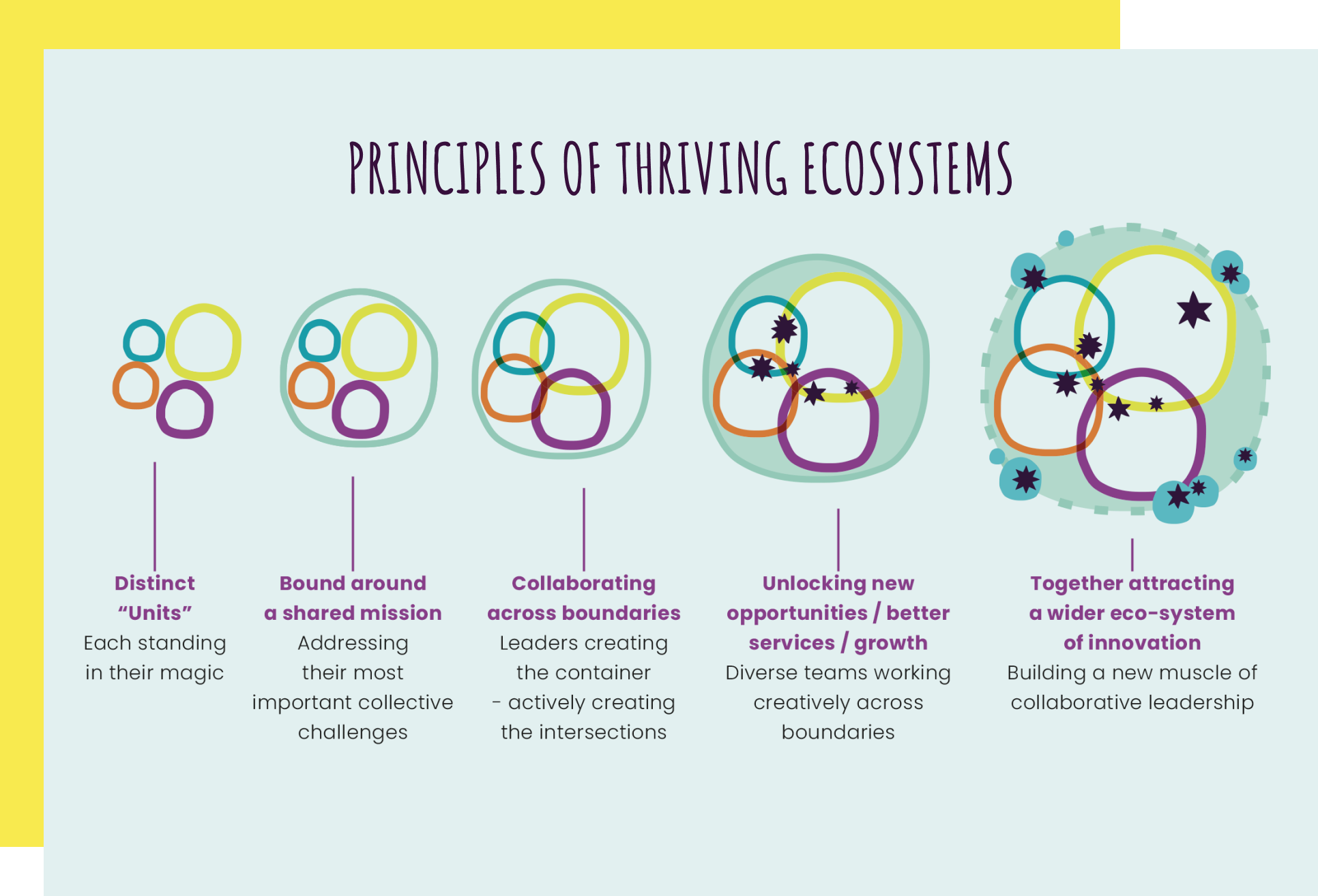HCT Stepping Stones
Roots and Readying
 Back to all
Back to all
Groundwork: getting to “if not that then what?”
5 Min Read
The lead-in time for cross-sector change is long.
Really long.
Groundwork - or ‘ready-ing’ as filmmaker, writer and educator Nora Bateson describes it - is about creating fertile soil, possibility and warmth towards ideas and ways of working that make that change possible. It is happening in pockets all around us, all the time. Some of it is intentional, with an eye on the horizon. Some of it happens as a result of deep, embedded or embodied practices that are an intrinsic part of how people work.
For us, every time we look back over our collective shoulder we can see tendrils stretching further back into the past - the more we learn about where we’re trying to get to, the more we can see its origins in our work as individuals, organisations, partners.
It will look different for each person and place, but we think there are some signs it might be useful to look out for: characteristics that suggest you are ready for something else. It can feel lonely, confusing, destabilising. But it can also be hugely exciting - it means there are probably other people who are also ready to do things differently, and this could be your sign to find them.
So what have we learned about what that looks and feels like?
Something has to change
Groundwork often grows from an increasing dissatisfaction with “business as usual”. For people working within rigid, hierarchical situations who have invested their time and energy in a way of working that, put simply, isn’t working, there might be a gut feeling that something isn’t right, while still holding on to the present system because it’s known, or safe, or they’re just not sure where to start with ‘different’.
Others experience friction from the restrictions of roles, organisations or systems that don’t allow for different ways of thinking or being. They see the gap between how things are and how they could be, and that - even with the best intentions - we are rarely working to close that gap.
Even the very first step of this - realising that something is broken and has to change - takes time and courage to recognise. We are so caught up in survival mode, as individuals, organisations and societies, that taking time to share these hunches can a) feel like a luxury, and b) make us feel vulnerable, or like we are betraying our work in some way. Acknowledging that we need to let some things go can be painful, particularly when you have had a lot invested in the status quo, and no certain way forwards.
However it means that you can be open to the possibility of something else - we are often so invested in knowing the answers, in proving that our way is right, that acknowledging that a new or different approach has value can be a quietly radical and revolutionary starting point.
*adapted from © Principles of Thriving Ecosystems (now-here.com) permission for non-commercial use granted
We didn’t have this language at the time, but having been introduced to Nowhere’s ‘Principles of Thriving Ecosystems’ (see image above), it’s clear that groundwork happens in that first “Distinct Units” phase. Everyone is siloed, self-contained - but feeling the discomfort of that, and longing for something “not like this”.
Groundwork includes people and organisations in those “Units” trying to do things differently, but within their own spheres or sectors. There might be experiments, like Barnwood’s Stewardship Circles, that are starting to create a path to the next stage, and building the foundations for collaboration around a shared mission. Once you realise the importance of this stage, it makes sense to look for ways of nourishing it - preparing the ground for change, rather than trying to create a rigid plan towards a distant and uncontrollable end goal.
Groundwork creates the conditions for a tipping point where you are collectively asking: If not that, then what? Coming together around that question was the origin of HCT Gloucestershire. But how we worked with that question produced some of the stickiest moments, and deepest learning. It involved complexity, both/and rather than either/or thinking, and working with polarities - all of which we learned on the fly.












